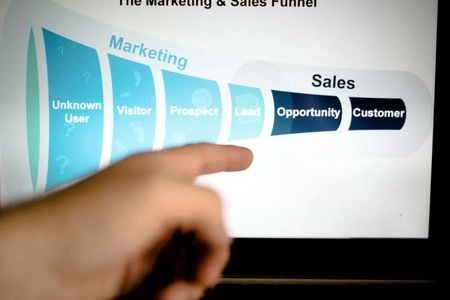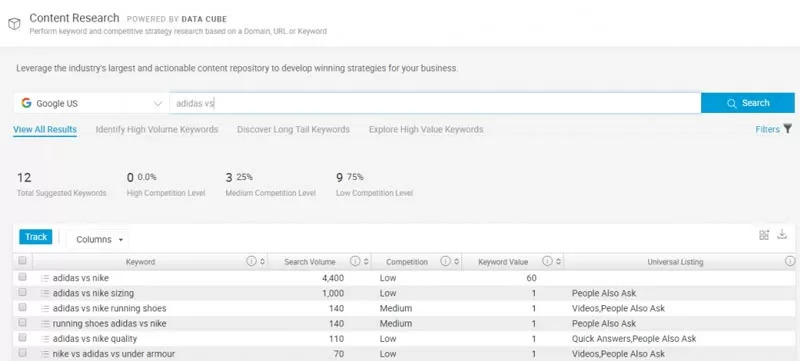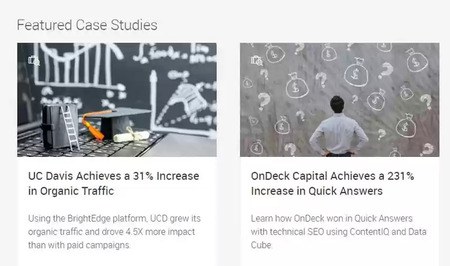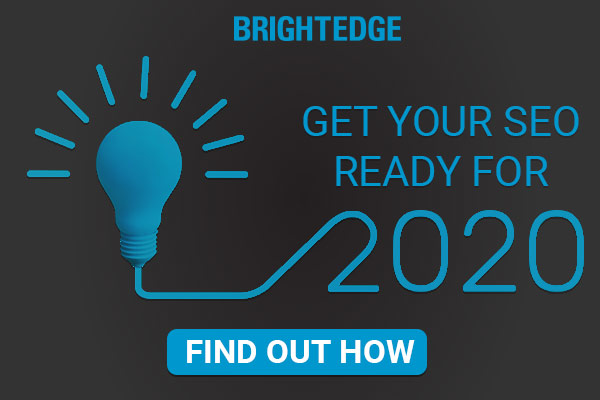When discussing the customer journey, a lot of people focus on the top of the funnel. They understand the importance of attracting attention through educational and thought leadership pieces. They also produce ample content for high-volume keywords that encourage people to find, explore, and build trust in organizations that gain a visible position in SEO, social, or press.

In addition to the top of the funnel, brands tend to focus on the bottom of the funnel. They offer webinars, demos, and product-oriented content that helps get customers to decision. They want to ensure that people on the verge of converting receive that extra push they need to make the commitment and buy.
Where many organizations fall short, however, is mid-funnel digital marketing. They don't create content that nurtures people from those initial educational stages and warms them up to get them ready for the demos and other end-of-funnel content. This stage, the mid-funnel digital marketing stage, requires special consideration.
Learn more about content mapping with the free BrightEdge content funnel mapping checklist.
Mid-funnel digital marketing is tricky because the prospect is interested enough trust to share some contact information with you, but not yet enough to move forward with a transaction. You need to build that intent before they lose interest.
Brands who are able to master this phase will see a noticeable increase in their ability to nurture customers all the way through the funnel. It's in the mid-funnel that customers look to see what makes your brand stand out against the competition. Here they make the transition from educating themselves about their pain points and possible solutions to evaluating their options. Creating content for this phase will generate warmer leads for the sales team and help the lead nurturing strategy succeed.
We wanted to dive into what makes the stages of mid-funnel digital marketing unique and what types of content you should use to target people here.
How the middle of the customer journey differs from the beginning and end
To begin creating ideal content for customers in the middle of the customer journey, we must first explore what differentiates the top of the funnel from the middle.
At the top of the funnel, people are aware of their pain points. They know that they have a problem that needs to be solved, but they are unsure of the potential solutions. Thus, they conduct research almost always involving SEO, and that's where mid-funnel digital marketing comes in.
By the time someone has reached the middle of the funnel, however, they have already formed some solid ideas about potential solutions for their pain point. Their concern now lies with evaluating these different solutions and selecting the one that will work best for them.
Customers during this stage want to know how you stand out against the competition. They want to know why they should listen to your ideas and purchase your product over that of others in the field. They want to know if they can trust you to solve their problem and provide them with an effective ROI.

In other words, people in the mid-funnel stages have begun to evaluate different solutions and compare you to your competitors. To effectively navigate this stage, you must present them with a strong case for trusting you and your product. These customers are not yet ready to buy. You want to warm them up so that they seize the opportunity to consume your bottom-of-funnel content of promotions and demonstrations.
Common mid-funnel digital marketing mistakes
As mentioned, brands build content for their customer funnels, the most common mistakes involve creating ample top-of-the-funnel content and a decent amount of bottom funnel content but neglecting the middle. Brands work hard to attract attention and readership, and they effectively present how to use their product or service for maximum benefits, but they do not warm people up along the way.
Many marketing teams also neglect collaborating with the sales team. Sixty percent of sales teams say that collaboration with other departments increased their productivity by at least 25%, and this is an excellent opportunity to engage in effective teamwork.
Sales teams can lend valuable insight into what customers like to see as they progress through the middle stages of the funnel, improving the ability of the marketing team to produce applicable content.
In turn, the sales team can use the content produced by the marketing team to engage with prospective customers and have material at hand to offer them when these common questions and objections arise.
How to create content for the middle of the customer journey
As you develop content for mid-funnel digital marketing, there are a few different places you can look. Start by combing through all the existing data you have on your customers. This current information can be used in a variety of ways and will provide you with a number of different content ideas.
Case studies
To begin, develop case studies and similar applied use case exposition. These case studies clearly demonstrate the ROI you achieve for customers within particular spaces. This can be powerful for customers comparing you to other brands within your industry. Showing the ROI that customers in similar spaces saw can help others begin to visualize how you can help them see similar results. For B2B brands that also need to persuade others in their organization to approve budget for the purchase, demonstrating this concrete ROI can be beneficial.
These case studies can be sent to prospective customers directly through the sales representative in contact with them. It should also be available through search, optimized for keywords that related to the results customers saw. Look for keywords centered around ‘results’ and optimize the site content for these terms.
Understanding common questions and objections
You also want to connect with your sales team to learn more about the questions and objections prospective customers commonly pose to them. See what often slows down the process of persuading customers to buy. You can then coordinate to create content that addresses these common objections. Share this content with the sales team so they can pass it on to customers who raise these questions.
Optimize your mid-funnel digital marketing content also for keywords related to these objections. Although these keywords may not have the high search volume of your top-of-funnel keywords, they have just as much of an important role: they are targeted to customers who have progressed to the mid-funnel and have raised these specific objections.
Analyze what convinced existing customers
Finally, dive into the deals you have won; specifically those who were sourced through organic. See what types of content coaxed these customers through the customer journey. Gauge the types of content and types of conversations you had with these converted customers as they moved though the journey. Use this to determine the types of content that have the greatest impact on customer conversion. You can use this to guide your preparations for future mid-funnel digital marketing.
The middle may be the most challenging to develop a content strategy and content for. Customers do not have the clear-cut interests that can be measured through keyword search volumes. They also do not have the obvious product questions that arise towards the end of the funnel. Understanding how to optimize for mid-funnel digital marketing, however, can breathe an incredible amount of life into your customer journey and help encourage an increasing number of customers to progress from the early funnel to the end.
Learn more about content mapping with the free BrightEdge content funnel mapping checklist.



